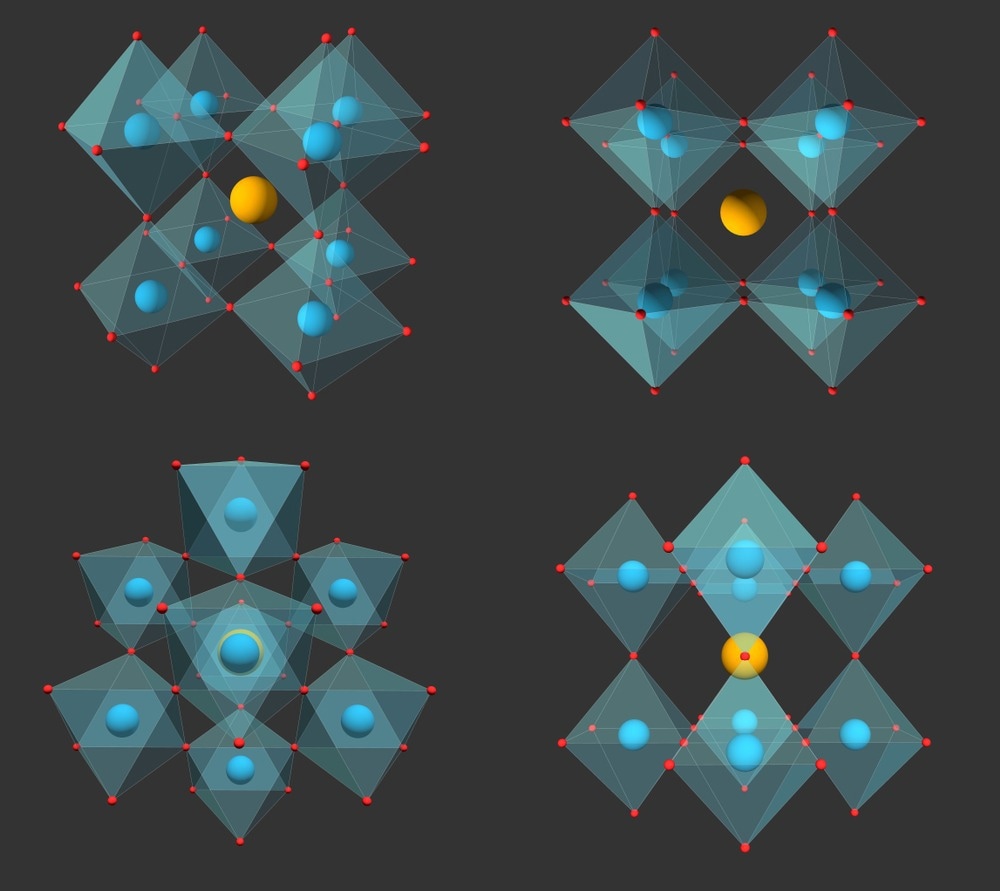A research team from the University of Freiburg in Germany has authored a new paper, appearing in the journal Advanced Functional Materials, which evaluates how suitable halide-perovskites are for advanced photoelectrochemical battery design.

Study: Are Halide-Perovskites Suitable Materials for Battery and Solar-Battery Applications–Fundamental Reconsiderations on Solubility, Lithium Intercalation, and Photo-Corrosion. Image Credit: Niethammer Zoltan/Shutterstock.com
Photoelectrical Energy Conversion and Storage
The environmental damage caused by population explosion and consequent urban expansion and industrial activities has focused the attention of researchers on sustainable alternative energy conversion and storage technologies.
Over the past couple of years, photochemical energy conversion and storage have become a research focus in the field of advanced sustainable energy generation. This technology has roots in the 1970s and is similar to photochemical water splitting and dye-sensitized solar cells.
Technologies in this field include perovskite solar cells, organic solar cells, and silicon-solar cells, which provide renewable energy conversion solutions. Batteries, supercapacitors, and fuel cells have been explored for photochemical energy storage. These strategies possess the potential to overcome the challenges associated with fossil fuel use and lead the world into a greener, more sustainable future.
The rational design of a coupled photovoltaic energy generation/battery storage system is a key focus in this field currently. The benefits of such an integrated system are lower costs, reduced internal power losses, and reduced device volume. Systems proposed in recent years display varying levels of integration, from integration modes I through III.
However, manufacturing a fully integrated multifunctional system is challenging and requires the use of appropriate advanced materials. Several materials have been explored in recent studies, with organic-inorganic lead halide perovskites emerging as suitable candidates. Research into perovskites has accelerated the development of next-generation solar cells over the past decade.
Halide perovskites have also been evaluated for use in lithium-ion batteries as active materials. Perovskite properties such as lithium-ion conduction behavior, electrochemical stability, and dissolution stability have been investigated by researchers.
Notable research that has extended the use of these active materials beyond simple energy storage includes the development of CHPI, an organic-lead halide perovskite for use as a multifunctional photoelectrode material for rechargeable photo batteries. Other studies have reported the development of multifunctional photoelectrodes constructed from cesium bismuth iodide.
The Study
The new paper has revisited CHPI to evaluate its photoelectrochemical behavior and suitability as an active material in photoelectrochemical battery devices. The use of CHPI as a multifunctional photoelectrode material candidate for integrated lithium-ion-based photo batteries has been explored by the authors. Generally, the perovskite’s performance under photo illumination and contact with electrolytes was investigated.
Polar carbonate-based electrolytes, which are commonly employed in commercial lithium-ion batteries, were used in the research to evaluate the photoelectrochemical behavior of CHPI. In addition, a low-polarity electrolyte was used by the researchers. The perovskite’s stability against dissolution, photo charging, and lithium-intercalation was probed using these electrolytes.
Spin-coating on glass substrates coated with FTO was used to synthesize the CHPI perovskite thin films. This produced a homogenous polycrystalline material structure. The photoelectrochemical performance of the prepared halide-perovskite thin film was characterized in a home build photoelectrochemical battery cell with a lithium metal counter electrode and a non-woven polymer thin film separator.
Study Findings
The paper has unveiled some important findings that will influence the use of organic-inorganic perovskites as multifunctional materials in integrated photoelectrochemical energy harvesting and storage devices.
Importantly, the research has revealed the tendency for 2D CHPI perovskites to dissolve in highly polar electrolytes commonly employed in current lithium-ion batteries. The selection of low polarity electrolytes stabilizes the CHPI electrode material, leading to purely capacitive behaviors in batteries and minimizing lithium-ion intercalation. However, when applying a galvanostatic charge whilst the perovskite electrode material is in contact with electrolyte leads to photo corrosion and CHPI phase dissolution.
Moreover, oxidative corrosion can also be induced by illuminating the material without the use of external voltage or oxidizing the material in dark conditions. Faradic plateaus are produced by the dissolved species, but the authors have noted that these plateaus do not necessarily indicate lithium-ion intercalation in the solid CHPI phase or correspond to photo-assisted charge.
In the eyes of the researchers, halide perovskites are not suitable for use in mode III photo battery systems. These materials possess inherent photochemical, chemical, and electrical instability and, furthermore, are incompatible with lithium-ion-based intercalation chemistry. They are unsuitable for use with polar electrolytes, which are commonly used in current lithium-ion batteries.
Some of the currently reported perovskites may be suitable as anode conversion type electrodes, but the results of studies on this use of these materials are not applicable to multifunctional photo battery cathode material research.
Overall, the new paper has provided a highly pertinent experimental analysis and characterization of organic-inorganic halide perovskites in photoelectrochemical systems. Whilst the study’s findings indicate that the material may not be suitable for integrated systems, it will help to inform future research on improved materials for this key technological application.
More from AZoM: How Far Can Semiconductor Manufacturing Be Automated?
Further Reading
Büttner, J et al. (2022) Are Halide-Perovskites Suitable Materials for Battery and Solar-Battery Applications–Fundamental Reconsiderations on Solubility, Lithium Intercalation, and Photo-Corrosion Advanced Functional Materials [online] onlinelibrary.wiley.com. Available at: https://doi.org/10.1002/adfm.202206958
Disclaimer: The views expressed here are those of the author expressed in their private capacity and do not necessarily represent the views of AZoM.com Limited T/A AZoNetwork the owner and operator of this website. This disclaimer forms part of the Terms and conditions of use of this website.